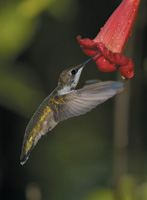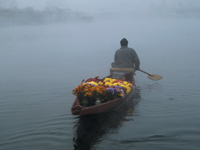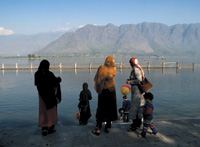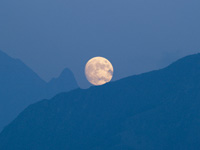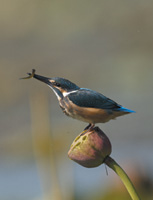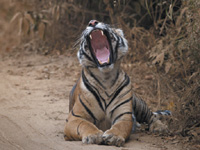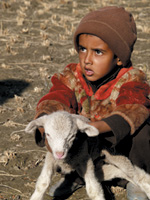John Isaac: Back To Nature And Home Again
John Isaac has lived more
than one lifetime and in his new incarnation he may just be one of the
happiest guys in the world. After 20 years traveling as chief photographer
for the United Nations (UN), Isaac has left behind the sadness and violence
he saw in places like Bosnia and Rwanda that brought him to the edge
of a serious mental breakdown. Since he retired in 1998 he has been
sampling and documenting the basic pleasures of nature and our environment. |
|||
The next day, alerted by the
evocative warning call of a peacock, he quietly tracks a tiger in the
jungle of Ranthambore, coming up on the sleeping cub who opens his eyes
as he is alerted to Isaac's presence. Isaac grabs his shot from
15 ft away, catching a reflection of the animal's eyelashes on his
half open eye as he lies in the bush. |
|||
A Long Road Well Traveled |
|||
Winning a gold medal at the photokina International Photography Contest in Germany in '78 prompted the UN to send Isaac to the Middle East to cover the Israel-Lebanon conflict, his first assignment. Stories documenting the Vietnamese boat people, the crisis in Ethiopia, and other trouble zones around the world followed. A Personal Journey |
|||
In one image, while the mist rises, a merchant, his boat loaded with orange, yellow, and lavender flowers, paddles to market. One of Isaac's most striking images shows a group of women and children as they stand at the edge of a lake surrounded by a majestic mountain range, waiting for a boat to take them home. A personal favorite is of a family surrounded by their earthly possessions, posing for Isaac's camera, their donkey standing patiently behind them. They are nomads who have come south with their cattle for the winter and who will return when the glaciers thaw. The scene is biblical. Isaac has also captured beautiful images of the children and, in "Little Shepherd," the face of a small boy holding onto his baby sheep is fixed in time with its intensity. |
|||
Digital Convert |
|||
During this trip Isaac waited
to shoot the full moon coming up over the mountains in Kashmir. He says,
"There was still a little bit of daylight left and I rigged my tripod
to a Jeep with weights at the bottom and just waited..." Hummingbird Tech Tips |
|||
"I rigged a radio transmitter
with a flash hooked up close to where the birds came to drink the nectar
from the flowers every half hour and I observed them quietly for a few
hours. After a while they would come right up to my nose and check me
out. At 1/250 sec sync to the flash I was getting a nice blur to the wing
and I didn't want to freeze the motion. I had tried shooting at
1/4000 sec and then at 1/2000 but the high shutter speeds froze the wings
and the birds looked like little helicopters. Finally I figured that at
1/250 sec the flash was still syncing, so I shot the whole series in manual
mode or in autofocus where I could manually tweak it and I outsmarted
the little guys." |
- Log in or register to post comments
